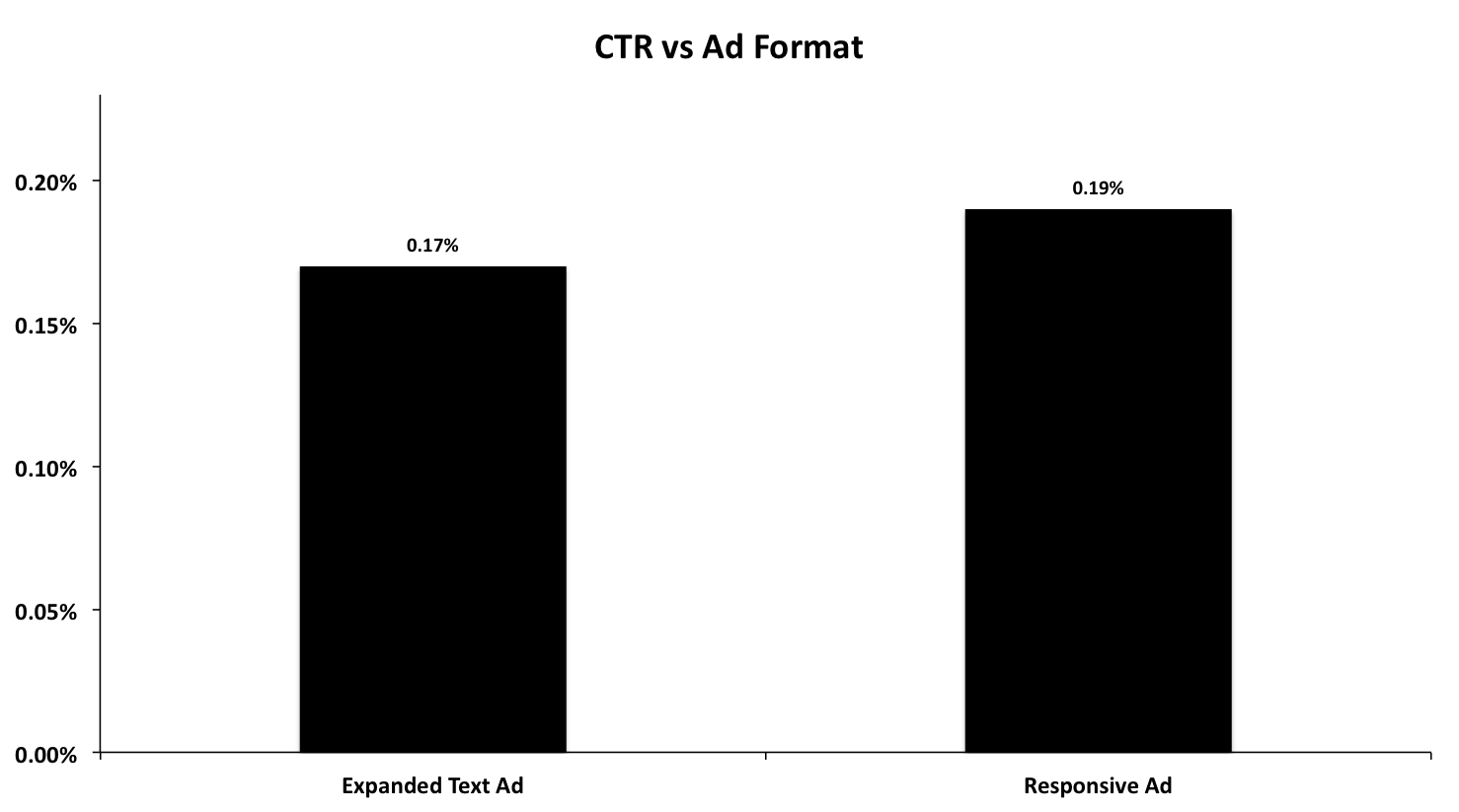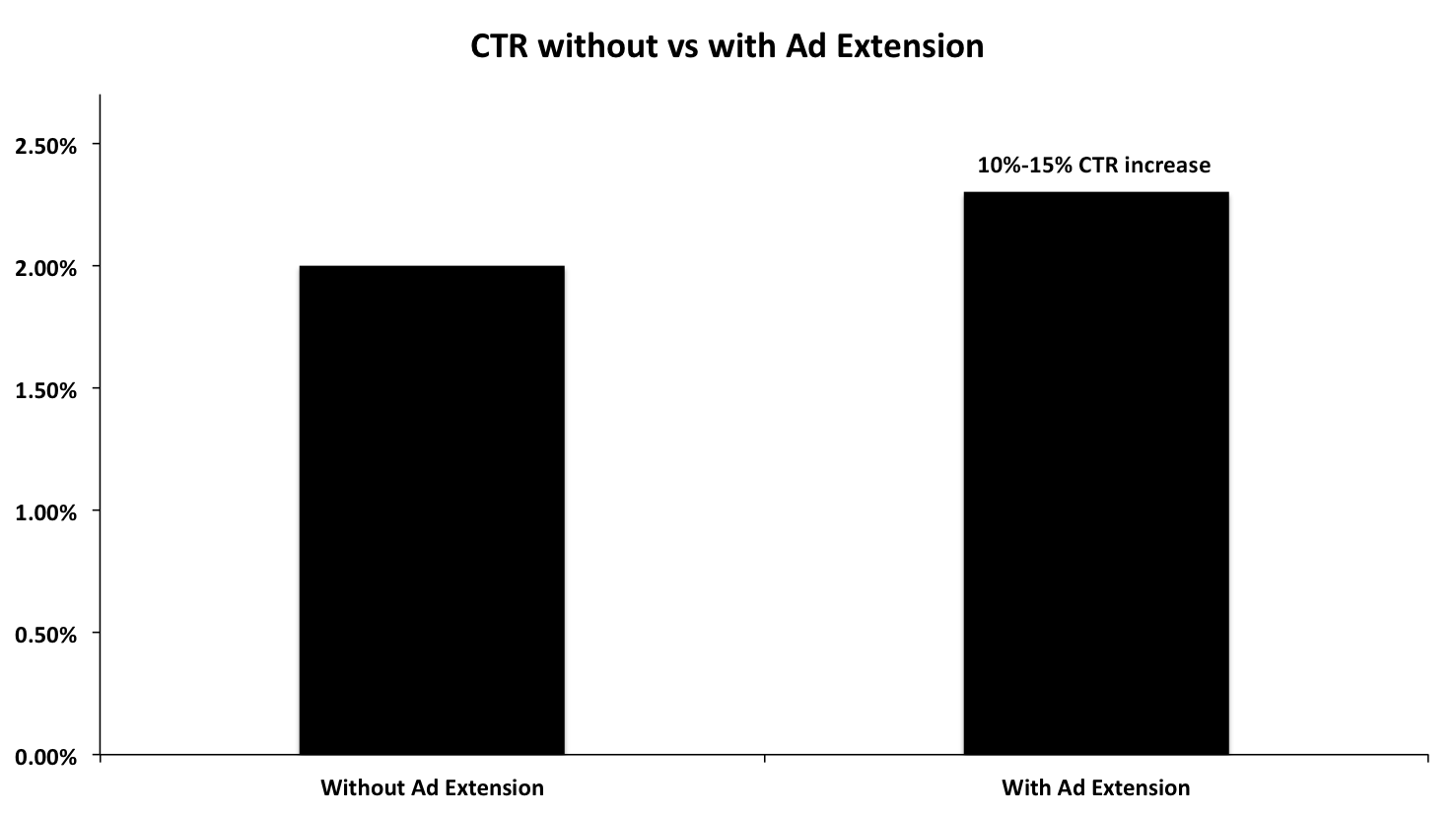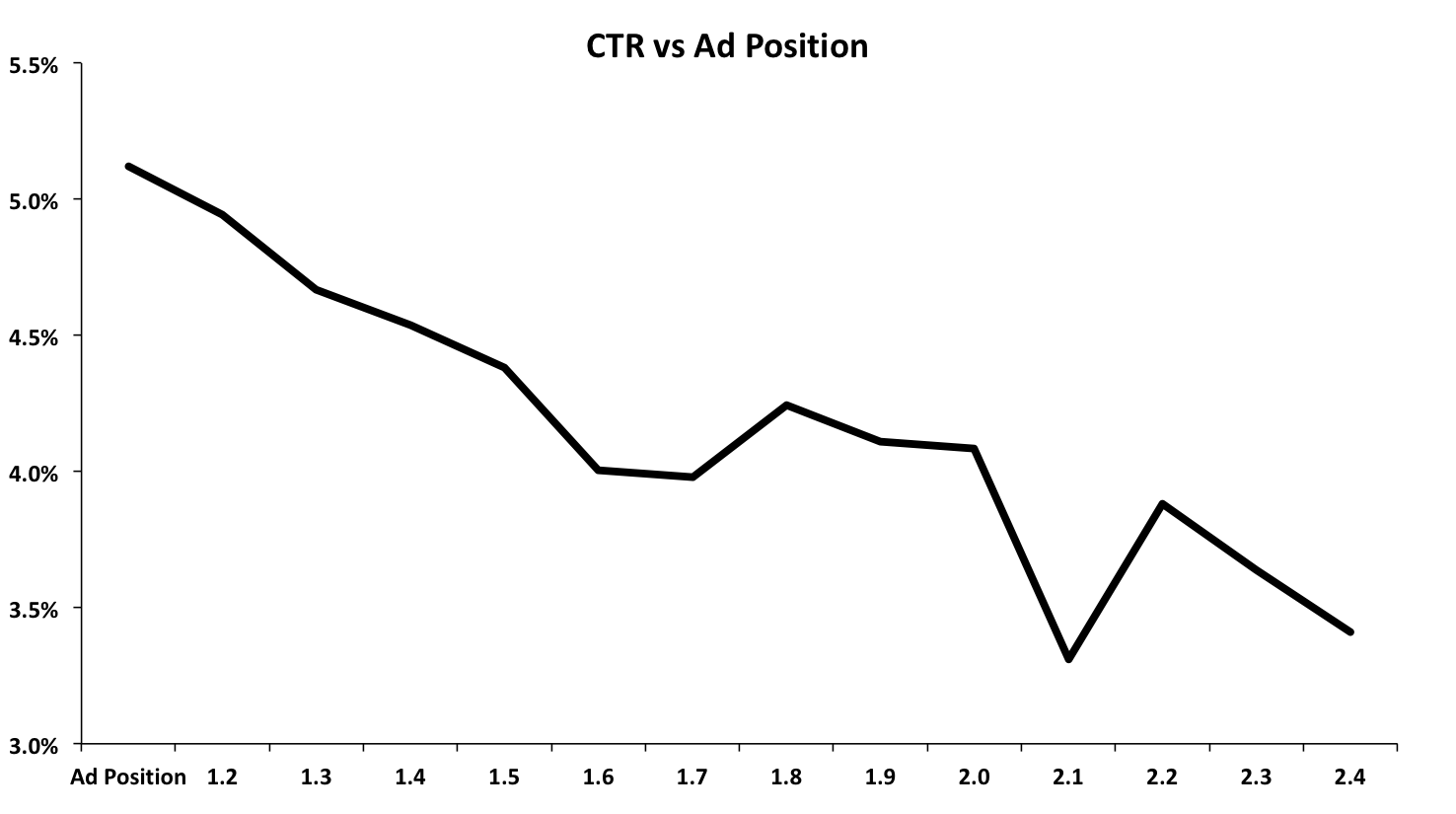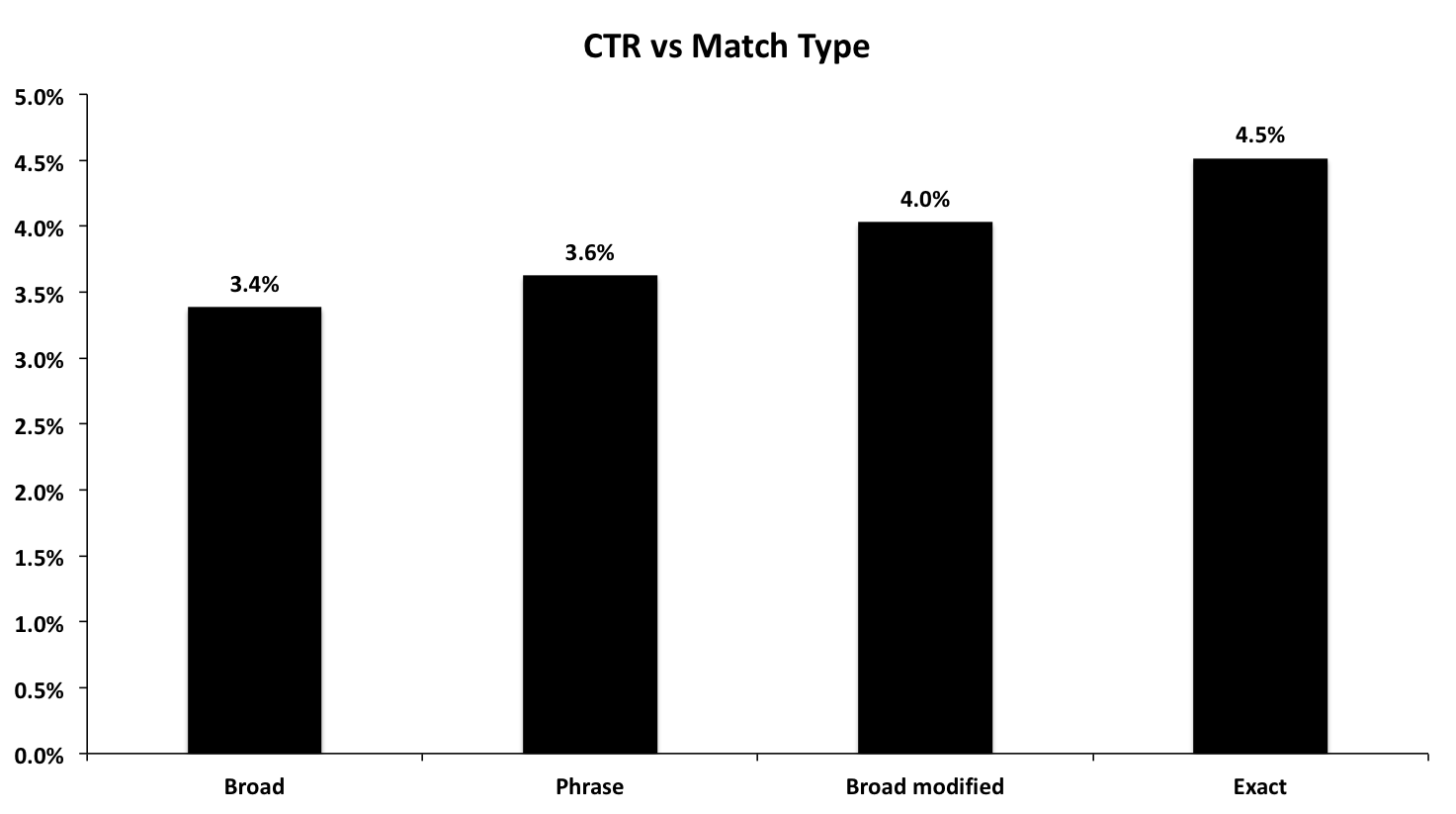7 Ways To Increase AdWords CTR (incl. Examples)
AdWords click-through rate (CTR) is important for several reasons. Firstly, a higher AdWords CTR translates into a higher traffic share for a given keyword or placement. Therefore a higher CTR lets you capture more traffic from the same keyword than your competition.
Secondly, click-through rate is one of the most important factors for AdWords quality scores and ad rank. Higher CTRs typically translate into lower cost per clicks.
So how do you increase your AdWords CTR?
There are a number of factors that determine the click-through rate on your AdWords ads. In this article, we will look at the seven most effective ways to increase AdWords CTR.
Ad Copy
Ad copy is the #1 factor influencing your AdWords CTR. This is where you have the most leverage to improve your click-through rate.
In order to increase CTR, you should always be split testing at least two ads in each ad group. Once a winning ad has been determined, you pause the other ad and write a new one that challenges the baseline performance.
Headlines should always include the keyword that you are targeting in an ad group. It increases relevance for the user searching for the keyword. In addition, AdWords shows targeted keywords in bold font in your ads which improves CTR.
The body of the ads should be packed with benefits of your product or service. Write succinct in order to fit in as many benefits as possible. Also, use up all of the ad space that is provided. If the description line offers 90 characters, don’t stop at 80 characters.
Ad Formats

Display network ad format results. Responsive ads resulted in a 12% click-through rate increase. Others find similar results.
The format of your ad can have a big impact on your click-through rate.
On the search network, AdWords only provides one major ad format: (expanded) text ads. You just need to make the most of this format. One way to increase the ad space of your search text ads, is to use ad extensions (more on that below).
On the display network, there are various ad formats. The three major ones are text ads, responsive ads and image ads.
Text ads don’t allow the use of imagery. Responsive ads are based on text and images. They will automatically scale to fit any ad inventory on Google AdWords. Image ads require you to upload an image in one of the supported banner sizes on AdWords.
In order to maximize your CTR, create separate ad groups with the same targeting but different ad formats. That way, you can split test the performance of each ad format based on the same AdWords targeting.
Ad Extensions

On average, ads using ad extensions see a 10%-15% increase in click-through rate.
Ad extensions are a feature that shows additional business information with your ads. They basically increase your ad space by adding additional lines of text below your ads.
Currently, AdWords offers ten different ad extensions: location extensions, affiliate location extensions, callout extensions, call extensions, message extensions, sitelinks extensions, callout extensions, structured snippet extensions, price extensions and app extensions. Most of the ad extensions are only available on the search network.
Ads using ad extensions see a 10%-15% increase in click-through rate (source: Google). That might not sound like a lot. However, if your competition is using ad extensions and you are not it puts you at a significant disadvantage.
The two must-have extensions are sitelink extensions and callout extensions. Sitelink extensions allow you to link to specific pages on your website below your ad. Callout extensions allow you to show additional benefits below your ad like “free shipping”.
Ad Position

The example above shows the same exact match keyword’s click-through rate at different ad positions. In this case, moving from ad position 2.4 to 1.1 increases CTR by 50%.
A better ad position will increase visibility and the CTR of your ad. This has become even more important after Google removed the right-hand side ads on the search results page. Your ad will get the best CTRs if it’s displayed between ad position 1 and 2.
Your ad’s click-through rate always competes with other ads in the same ad position. So just increasing your ad position by means of increasing your cost per click is not a good idea.
You need to use all of the strategies outlined in this article to beat competitors’ CTR in the same ad position. This is how you will be rewarded with a higher quality score and lower cost per clicks than your competitors.
Keyword Match Types

Click-through rates by match type across a budget of $150,000.
Google AdWords offers three main keyword match types: broad, phrase and exact match. In addition, there is another match type called broad modified which is a more targeted version of the standard broad match.
Your click-through rate will differ depending on which ones you use. As a general rule of thumb, click-through rates increase from broad to phrase and exact match. Broad modified will typically outperform standard broad match on CTR since it is much more targeted.
Why do CTRs increase from broad to phrase and exact match?
Targeting the keyword tennis shoes via broad match really means you are targeting not only [tennis shoes] but anything related to it. So technically, AdWords could show your ad for the term [tennis socks] as well. Since broad match can trigger such a wide range of search terms, it is impossible to write an ad that is relevant to all of them. The result is a lower click-through rate on the ad.
Targeting “tennis shoes” as phrase match, AdWords will show ads not only for [tennis shoes] but also any variation with words before and after the target keyword. So [cheap tennis shoes] or [tennis shoes repair] would also be included. While phrase match is much more specific than broad match, it still covers a wide range of possibly unrelated search terms.
The most specific match type is exact match. With exact match AdWords will only target [tennis shoes] and minor variations such as singular/plural and misspellings. Targeting exact match keywords will generate the highest click-through rates.
Negative Keywords
Even though exact match keywords generate the highest click-through rates, you won’t get around avoiding phrase match and broad to maximize traffic. There are simply to many keyword variations in any given market that can’t all be covered by just using exact match keywords.
So how do you use phrase and broad match and maximize CTR at the same time? The answer is negative keywords.
A campaign or ad group that uses broad match or phrase match keywords always needs negative keywords in order to optimize performance and click-through rate.
Let’s use the example above again. You write an ad for tennis shoes and target the broad match keyword tennis shoes. The keyword might trigger 1,000 impressions for [tennis socks] for which your ad isn’t optimized at all.
This would result in a low CTR for these impressions and pull the overall average click-through rate down. The solution is to add [tennis socks] as a negative keyword to your campaign. If you are also selling tennis socks, you would target them with a relevant ad in a separate ad group.
Ad Group Structure
Ad group structure plays a key role in everything explained above. So how do you structure your ad groups for maximum CTR?
You should target your best-performing keywords as exact match in dedicated ad groups. Ideally each ad group only has one or a few closely related exact match terms that can be covered by one ad.
You also have ad groups where you only target phrase match keywords. These are used to target less common keyword variations that cannot be covered by just exact match keywords. Don’t forget to add negative keywords to these ad groups to increase CTR.
Lastly, you will have some ad groups with broad match keywords. These mainly help to explore new keywords that you might not have thought of yet. Using the search terms report you can uncover well-performing search terms and add them in separate exact match ad groups.

No comments yet.